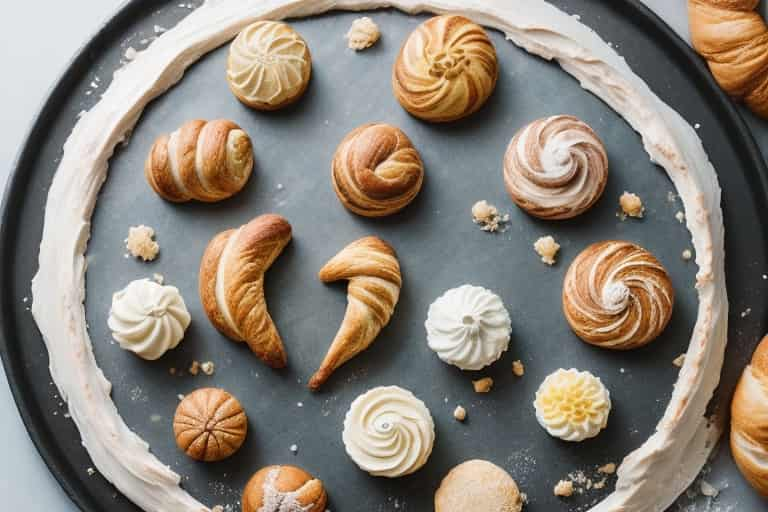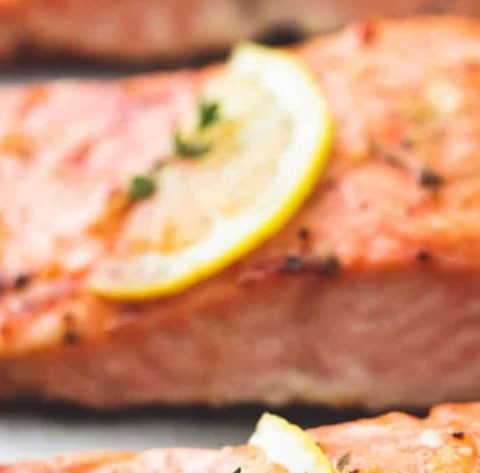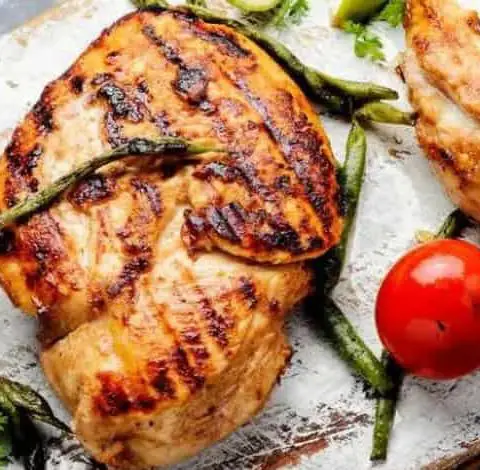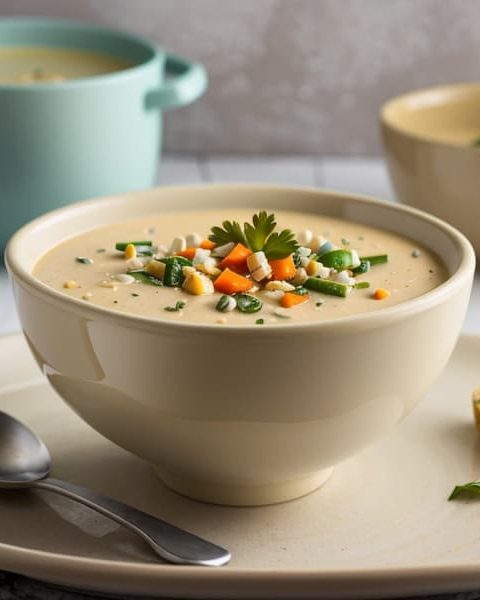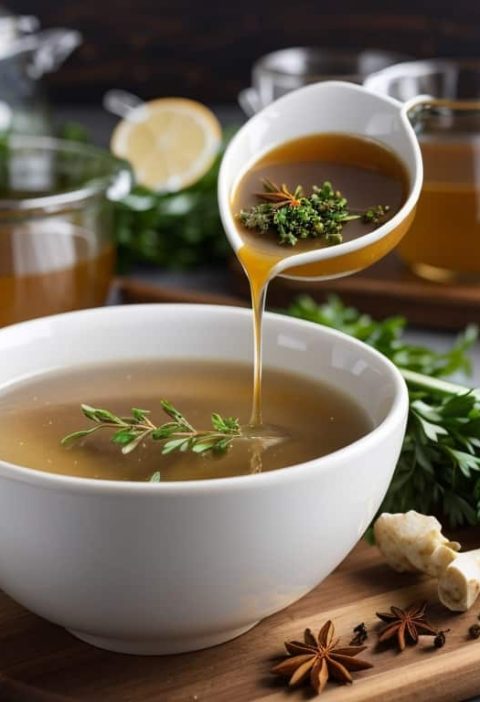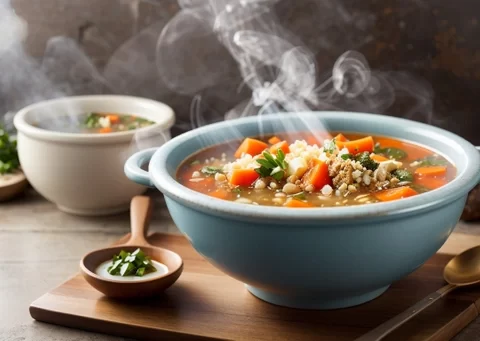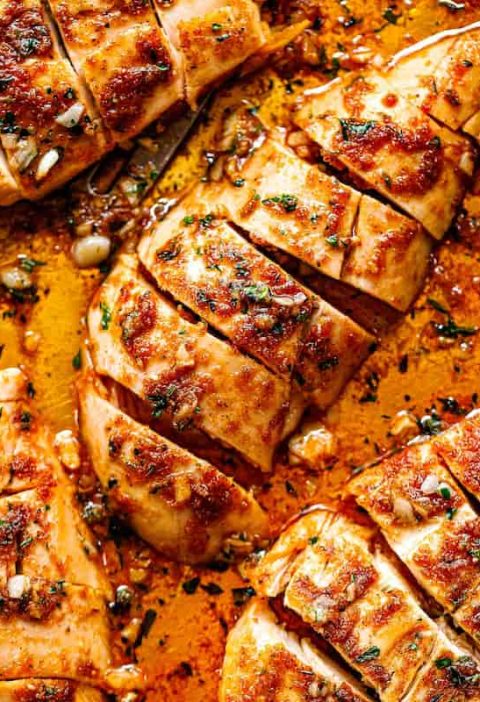In the world of baking and culinary arts, understanding the terminology is as essential as mastering the recipes. This glossary provides concise definitions for common and not-so-common terms, ensuring you have the knowledge you need to excel in your culinary endeavors.
Aerate
To incorporate air into something, usually a batter. This can be done by sifting flour, whisking eggs, or using a mixer.
Almond paste
A mixture of ground almonds, sugar, and sometimes egg whites. It is used as a filling or topping for pastries and cakes.
Angel food cake
A type of cake made with whipped egg whites, sugar, and flour. It has a light and airy texture and is usually baked in a tube pan.
Autolyse
In bread baking, combine the flour and water before adding other ingredients and before kneading. This allows the flour to absorb the water and the gluten to develop.
Bain-marie
Also known as a hot water bath, it is usually used to melt chocolate and butter gently and gradually over a pot of simmering water. It can also be used to cook custards and cheesecakes in the oven without curdling or cracking.
Bake blind
Baking the crust of a pie or tart without the filling. It can be done with a variety of methods. One would be to prick the bottom of the crust before filling it with pie weights, rice, pulses, or beans prior to baking. This prevents the crust from puffing up or shrinking.
Baker’s yeast
A type of living organism that produces carbon dioxide gas and alcohol when it feeds on sugars and starches. It is used as a leavening agent in breads and other baked goods.
- Related: Mary Berry Coconut Cake Recipe
Baking powder
A chemical leavener that contains baking soda and an acid. When mixed with liquid, it produces carbon dioxide gas that causes baked goods to rise. It is usually double-acting, meaning it reacts twice: once when wet and once when heated.
Baking soda
Also known as sodium bicarbonate, it is a chemical leavener that reacts with acidic ingredients such as vinegar, lemon juice, or buttermilk to produce carbon dioxide gas that causes baked goods to rise. It also neutralizes acidity and enhances browning.
Baking sheet
A large, flat metal sheet such as a cookie sheet or sheet pan. Some are totally flat; some have rims. They are used for baking cookies, biscuits, scones, breads, and other items that do not need a mold.
Batter
A mixture of dry and liquid ingredients such as eggs, flour, and milk or water. Similar to dough it has a much thinner consistency and cannot be kneaded. It is usually poured or spooned into pans or molds before baking.
Beat
Mixing a mixture rapidly and intensely to combine ingredients and incorporate air into the mixture. Typically done with a whisk or mixer.
Biscuit method
Technique for blending cold fat into flour so that it achieves a flaky texture, like biscuits and scones. The fat is cut into small pieces using two knives, a pastry cutter, or a food processor, then mixed with the other ingredients until a crumbly dough forms.
- Related: Mary Berry Boiled Fruit Cake
Blend
Mixing two substances together so that they become incorporated together.
Blind bake
See bake blind.
Boil
Heat a liquid until it reaches its boiling point, which is 100°C (212°F) at sea level. Boiling can be used to cook pasta, rice, potatoes, eggs, and other foods.
Bread flour
Wheat flour with a relatively high gluten content, usually around 13 to 14 percent. Its strong structure makes it suitable for making crusty breads and rolls, pizza doughs, and similar products.
Buttercream
A type of icing or frosting used to fill, top, coat, and decorate cakes or cupcakes. Typically made by creaming butter with powdered sugar and adding any extra colorings and flavorings.
- Related: Biscuit Crumb Base
Caramelize
The process of cooking sugar until it turns brown. When sugar is heated to high temperatures, it undergoes chemical changes and breaks down into caramel molecules that have a rich flavor and color. Cooking can also caramelize the natural sugars found in various fruits and vegetables such as onions.
Chill
To cool something in the refrigerator or freezer until it reaches the desired temperature or firmness.
Chocolate chips
Small pieces of chocolate that are used as an ingredient or topping for cookies, cakes, muffins, brownies, and other desserts. They come in different flavors such as milk chocolate, dark chocolate, white chocolate, or semi-sweet chocolate.
Chop
Using a knife or sharp object to repeatedly cut something into small pieces. The size and shape of the pieces depend on the recipe and personal preference.
Coat
To cover something with a wet or dry substance. For example, after baking, bread loaves are usually coated with a layer of butter. Or, chicken pieces can be coated with flour before frying.
Combine
To mix two ingredients together just until mixed.
Confectioners’ sugar
Also known as powdered sugar or icing sugar, it is white sugar that has been ground to a very fine powder. It dissolves easily and is used extensively in candy making, for making frostings and icings, and for decorating or dusting the tops of cakes and other desserts.
Cookie cutter
A metal or plastic tool that is used to cut out shapes from cookie dough. They come in various shapes and sizes, such as circles, stars, hearts, animals, etc.
Cream
Beat together sugar and butter until a light, creamy texture and color have been achieved. This method adds air to the batter, which helps the leavening process. Sometimes eggs are also added during the creaming step.
Crimp
Technique of pinching the sides and tops of pie or tart crusts to create a decorative edge. This also helps to seal the crust and prevent leakage.
Crumb
The pattern of air holes in the structure of a baked bread or cake. A fine crumb means the holes are small and even; a coarse crumb means the holes are large and irregular.
Crust
The outer layer of a baked product, such as bread, pie, or pizza. It can be thin or thick, soft or crisp, depending on the recipe and baking method.
Cut in
Incorporating butter or other solid fat into flour just until the fat is in small, granular pieces resembling coarse sand. This is achieved by using two knives in a cross-cutting motion, forks, or a special pastry cutter. This technique is used for making pie crusts, biscuits, scones, and other flaky pastries.
Dissolve
To mix a solid substance with a liquid until it forms a homogeneous solution. For example, dissolving sugar in water or yeast in warm milk.
Dough
A mixture of flour, water, and other ingredients that is thick enough to be kneaded or shaped by hand. It is usually used for making breads, pizzas, pastries, and other baked goods.
Drizzle
To pour a thin stream of a liquid on top of something. For example, drizzling chocolate sauce over ice cream or lemon glaze over cake.
Dust
To coat the surface of something with a light sprinkling of a dry substance (flour, sugar, cocoa powder, etc.). This can be done for various purposes, such as preventing sticking, adding flavor, or enhancing appearance.
Egg wash
A mixture of beaten egg and water or milk that is brushed on the surface of baked goods before baking. It gives them a shiny and golden appearance and helps them to brown evenly.
Extract
A concentrated liquid that contains the flavor and aroma of a certain ingredient, such as vanilla extract or almond extract. It is used to add flavor to baked goods and other dishes.
Fermentation
The process in which yeast consume starches and sugars in bread dough and produce carbon dioxide gas and alcohol. This causes the dough to rise and develop flavor and texture.
Filling
A mixture of ingredients that is used to fill pies, tarts, cakes, pastries, or other baked goods. It can be sweet or savory, such as fruit filling, custard filling, cheese filling, etc.
Flour
A fine powder made from grinding grains such as wheat, rice, corn, oats, etc. It is the main ingredient in most baked goods and provides structure and texture. There are different types of flour with different gluten contents and uses.
Fold
A gentle mixing technique that involves lifting and turning over the ingredients with a spatula or spoon. It is used to combine delicate mixtures without deflating them, such as whipped cream or egg whites with batter.
Fondant
A type of icing or candy that is made from sugar syrup that has been cooked to a certain temperature and then kneaded until smooth and pliable. It can be rolled out and used to cover cakes or molded into shapes and decorations.
Ganache
A rich chocolate mixture made from heating cream and pouring it over chopped chocolate. It can be used as a glaze, frosting, filling, or truffle base for cakes and other desserts.
Glaze
A thin coating of liquid that is applied to the surface of baked goods to give them shine and flavor. It can be made from sugar syrup, fruit juice, honey, milk, etc.
Half-and-half
A dairy product that is a mixture of equal parts of milk and cream. It has a fat content of about 10 to 12 percent and is used for adding richness and creaminess to soups, sauces, coffee, and baked goods.
Heavy cream
A dairy product that is the high-fat part of fresh milk. It has a fat content of at least 36 percent and can be whipped into stiff peaks. It is used for making whipped cream, ganache, butter, and other rich desserts.
Honey
A thick, sweet liquid that is produced by bees from the nectar of flowers. It has a distinctive flavor and color depending on the type of flowers. It is used as a sweetener and flavoring agent for baked goods and other dishes.
Hydrate
To add water or another liquid to something to make it moist or soft.
Icing
A sweet mixture that is used to cover or decorate cakes, cookies, cupcakes, and other baked goods. It can be made from sugar, butter, cream cheese, chocolate, or other ingredients. It is also known as frosting.
Invert sugar
A type of sugar that is made by breaking down sucrose (table sugar) into glucose and fructose. It is sweeter and more stable than sucrose and prevents crystallization in syrups and candies. It can be made by heating sucrose with water and an acid such as lemon juice or cream of tartar.
Italian meringue
A type of meringue that is made by whipping egg whites with hot sugar syrup until stiff and glossy. It is more stable and durable than other types of meringue and can be used for making pies, cakes, macarons, marshmallows, and other desserts.
Jam
A thick fruit preserve that is made by cooking fruit with sugar and sometimes pectin (a natural thickener found in some fruits). It has a soft texture and can be spread on bread, toast, scones, or used as a filling for pastries and cakes.
Jelly
A clear fruit preserve that is made by cooking fruit juice with sugar and pectin. It has a firm texture and can be cut into shapes or spread on bread, toast, scones, or used as a glaze for cakes and pastries.
Juice
The liquid that is extracted from fruits or vegetables by squeezing, pressing, or blending them. It can be used as a drink or as an ingredient for baking and cooking.
Knead
To work dough with the hands by folding, pressing, stretching, and turning it repeatedly. This develops the gluten in the flour and makes the dough smooth and elastic. It is an essential step for making breads, pizzas, pastas, and other dough-based products.
Knife test
A method of checking the doneness of cakes, breads, brownies, and other baked goods by inserting a knife into the center and seeing if it comes out clean or with crumbs. If it comes out clean, the baked good is done; if it comes out with wet batter, it needs more baking time.
Knock back
To punch down risen dough to release the air bubbles and redistribute the yeast. This helps to improve the texture and flavor of the dough.
Laminate
To create thin layers of dough and butter by folding and rolling them repeatedly. This technique is used for making puff pastry, croissants, danishes, and other flaky pastries.
Layer cake
A type of cake that consists of two or more layers of cake with filling or frosting in between them. The layers can be of the same or different flavors and colors.
Leavening agent
An ingredient that causes dough or batter to rise by producing gas bubbles. There are three main types of leavening agents: biological (such as yeast or sourdough starter), chemical (such as baking powder or baking soda), and mechanical (such as air or steam).
Macaron
A type of French cookie made from almond flour, egg whites, and sugar. They have a smooth, domed top and a ruffled edge called a foot. They are usually sandwiched with a filling such as buttercream, ganache, or jam.
Marble
To create a swirl effect by gently folding two or more batters or doughs of different colors or flavors together. For example, marbling chocolate and vanilla cake batter or cheese and spinach bread dough.
Marinate
To soak food in a liquid mixture (usually containing oil, vinegar, herbs, spices, etc.) for a certain period of time to enhance its flavor and tenderness. For example, marinating chicken in yogurt and spices before baking.
Mash
To crush food into a smooth or chunky paste using a fork, potato masher, or food processor. For example, mashing bananas for banana bread or potatoes for mashed potatoes.
Measure
To determine the amount of an ingredient using a measuring cup, spoon, scale, or other device. Accurate measuring is important for successful baking.
Melt
To heat a solid substance (such as chocolate, butter, cheese, etc.) until it becomes liquid or soft.
Meringue
A mixture of whipped egg whites and sugar that forms stiff peaks. It can be used as a topping for pies and cakes, baked into cookies and shells, or folded into batters and mousses.
Mince
To chop food into very small pieces using a knife or a food processor. For example, mincing garlic or ginger.
Mix
To stir ingredients together until well combined using a spoon, whisk, mixer, or food processor.
Nut flour
A type of flour made from finely ground nuts such as almonds, hazelnuts, pistachios, etc. It is gluten-free and adds flavor and texture to baked goods. It is often used in combination with wheat flour or other flours.
Nutella
A brand name for a chocolate-hazelnut spread that is popular in Europe and around the world. It can be used as a filling or topping for cakes, cookies, crepes, pancakes, and other desserts.
Oil
A liquid fat that is derived from plants such as olive, canola, sunflower, etc. It is used for greasing pans, adding moisture and richness to baked goods, and frying foods.
Oven spring
The rapid rise of bread dough in the oven due to the expansion of gas bubbles and the activation of the yeast. It results in a lighter and airier loaf.
Overmix
To mix ingredients more than necessary or beyond the point specified in the recipe. This can cause gluten to develop excessively and make baked goods tough or dense.
Pastry bag
A cone-shaped bag made of cloth, plastic, or paper that is used to pipe batter, dough, frosting, whipped cream, or other soft mixtures into various shapes and designs. It is fitted with a metal or plastic tip that determines the size and shape of the piping.
Pastry blender
A handheld tool that consists of several metal wires or blades attached to a handle. It is used to cut butter or other solid fat into flour when making pastry dough.
Pastry brush
A small brush with soft bristles that is used to apply egg wash, melted butter, glaze, or other liquids to the surface of baked goods.
Pastry cream
A thick custard made from milk, sugar, egg yolks, cornstarch, and flavorings such as vanilla. It is used as a filling for cakes, pies, tarts, and pastries.
Quiche
A type of savory pie that consists of a pastry crust filled with eggs, cream, cheese, and various fillings such as bacon, ham, spinach, mushrooms, etc. It is baked until golden and set.
Quick bread
A type of bread that does not require yeast or kneading. It is leavened with baking powder or baking soda and can be made with various ingredients such as flour, cornmeal, oats, fruits, nuts, etc. Examples of quick breads are banana bread, muffins, scones, and biscuits.
Quinoa
A gluten-free seed that is high in protein and fiber. It can be cooked like rice or ground into flour for baking. It has a nutty flavor and a fluffy texture.
Ramekin
A small ceramic or glass dish that is used for baking individual portions of custards, soufflés, cakes, or other desserts. It can also be used for serving sauces or dips.
Reduce
To boil a liquid until some of it evaporates and the remaining liquid becomes thicker and more concentrated in flavor. For example, reducing wine or stock to make a sauce.
Rest
To let dough or batter sit for a certain period of time before shaping or baking. This allows the gluten to relax and the flavors to develop.
Rise
To increase in volume due to the action of yeast or other leavening agents. For example, letting bread dough rise until doubled in size before baking.
Roll out
To flatten dough into a thin sheet using a rolling pin. This technique is used for making pie crusts, cookies, pastries, pizza doughs, and more.
Royal icing
A type of icing that is made from egg whites and powdered sugar. It hardens when it dries and can be used for decorating cookies, cakes, gingerbread houses, and more.
Sauté
To cook food quickly in a small amount of oil or butter over high heat, stirring or tossing frequently.
Scald
To heat a liquid such as milk or cream until it is almost boiling, but not quite. This is done to kill bacteria, dissolve sugar, or activate enzymes.
Score
To make shallow cuts on the surface of something, such as bread dough or meat. This is done to create a pattern, control expansion, or allow flavors to penetrate.
Sift
To pass dry ingredients such as flour, sugar, or cocoa powder through a fine mesh sieve to remove lumps and aerate them.
Simmer
To cook food in a liquid that is kept just below its boiling point. Bubbles should form slowly and gently on the surface.
Sour cream
A dairy product that is made by fermenting cream with bacteria that produce lactic acid. It has a thick texture and a tangy flavor. It is used for adding richness and moisture to baked goods and for making dips and sauces.
Stir
To mix ingredients together using a circular motion with a spoon, spatula, or whisk.
Stir-fry
To cook food quickly in a small amount of oil over high heat, stirring constantly. This technique is common in Asian cuisines and requires a wok or a large skillet.
Sugar
A sweet substance that is derived from plants such as sugarcane, sugar beet, corn, etc. It is used as a sweetener and flavoring agent for baked goods and other dishes. There are different types of sugar with different properties and uses.
Tempering
To heat and cool chocolate in a controlled way to make it smooth, glossy, and easy to work with. This technique is used for making chocolate decorations and coatings.
Thicken
To increase the viscosity of a liquid by adding a thickening agent such as cornstarch, flour, gelatin, etc., or by reducing it through evaporation.
Toast
To heat nuts, seeds, spices, bread, or other foods until they become brown and fragrant. This enhances their flavor and texture.
Torte
A type of cake that consists of several layers of sponge cake with filling or frosting in between them. The layers can be of the same or different flavors and colors.
Unsalted butter
Butter that does not contain any added salt. It is preferred for baking because it allows more control over the saltiness of the final product.
Unsaturated fat
A type of fat that has one or more double bonds between its carbon atoms. It is usually liquid at room temperature and comes from plant sources such as olive oil, canola oil, sunflower oil, etc. It is considered healthier than saturated fat because it lowers cholesterol levels and reduces the risk of heart disease.
Upside-down cake
A type of cake that is baked with fruit and sugar at the bottom of the pan, then inverted onto a plate after baking. The fruit becomes caramelized and forms a topping for the cake.
Vanilla extract
A concentrated liquid that contains the flavor and aroma of vanilla beans. It is used to add flavor to baked goods and other dishes.
Vegan
A person who does not consume any animal products or by-products such as meat, eggs, dairy, honey, etc. Vegan baking requires substituting these ingredients with plant-based alternatives such as soy milk, almond milk, flax seeds, etc.
Vegetable oil
A liquid fat that is derived from plants such as corn, soybean, canola, etc. It is used for greasing pans, adding moisture and richness to baked goods, and frying foods.
Water bath
See bain-marie.
Whip
To beat ingredients rapidly with a whisk or mixer until they become light and fluffy. This technique is used for whipping cream, egg whites, or other mixtures that need to incorporate air.
Whisk
A kitchen tool that consists of several metal wires attached to a handle. It is used for stirring, beating, whipping, and mixing ingredients together.
Xanthan Gum:
A natural thickening agent and stabilizer often used in gluten-free baking. It helps improve the texture and structure of baked goods by providing elasticity and moisture retention.
Yeast:
A microorganism used as a leavening agent in bread and pastry baking. Yeast ferments sugar in the dough, producing carbon dioxide gas, which causes the dough to rise and create a light, airy texture.
Zest:
The outermost, colored part of citrus fruit peel (such as lemon, lime, or orange). Zest is often used to add intense flavor and aroma to baked goods, desserts, and dishes.
Zester:
A kitchen tool with small, sharp holes or blades used to grate or peel the zest from citrus fruits. It is essential for extracting zest without the bitter white pith.
More From British Recipes Book Logo

